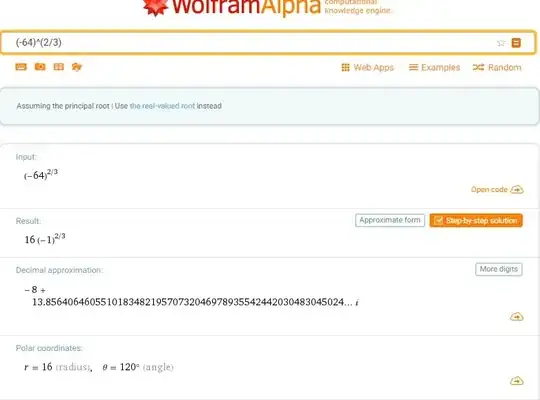From school you surely know, that the equation $x^1 = 1$ has one $x^2 = 1$ has two solution. However, what about the equation $x^n = 1$?
From school you know that this equation $x^n = 1$ would only have one or two solutions, depending on whether $n$ is even or odd. But wouldn't it be more interesting to have numbers that would give exactly n solutions? Well yes, there are such numbers, called complex numbers. In fact the number $-8 +13.8564...i$ you got is such a number, consisting of two parts: $-8$ is called the real part, $+13.8564...$i the imaginary part, one of the three solutions to the equation $${(x^\frac{1}{3}})^2 = x^\frac{2}{3} = {(x^2)}^{\frac{1}{3}} =-64$$
If you take above number, put it to the power of $3$, you will get again $-64$. (On a side note: Maybe the number can not be represented exactly, so it is possible you get again a complex number, however that number is sure to have a real part very close to $-64$ and an imaginary part extremely close to $0$.)
I recommend you play a bit around in wolfram alpha with the equation $x^n = 1$, just pluck in some numbers for $n$. What can you say about the roots of this equation? Where do they lie in the complex plane? (Imagine the plane to be just your normal, usual coordinate system from school. Instead of the $x-y$ however you now just label the axis $x$ and $i$..)
If you connect two neighbored roots, what is their distance from each other, what about the angle between three of such roots? I am pretty sure you will find some interesting results. (A glimpse of a lot more to come...)

